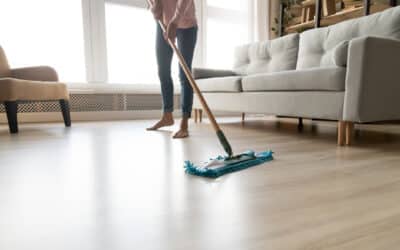Flooring is the cornerstone of any beautiful home. When you choose hardwood flooring, especially maple or oak, you can be sure that your living space will pass the eye-test. You will quickly add elegance to your home and significantly increase its resale value.
So, if you’ve got as far as this blog, congratulations! You have narrowed your choices down to these two excellent options. But now you have one final decision to make: Maple or oak flooring?
This is not a decision you should take lightly as the choice can be overwhelming. Allow us to simplify things and help you. Today you can successfully reach the finish line by choosing a floor that suits your needs.
The Difference Between Maple and Oak Flooring

Maple and oak are two of the most popular hardwood flooring options among homeowners.
And rightly so because both provide excellent flooring for your home.
Although both are popular these days, there are some differences that you should be aware of before you buy.
Types of Maple and Oak Flooring
- Solid maple flooring is made of pure maple wood and comes in two varieties: Hard Maple and Soft Maple.
- The planks are made from a single piece of wood. Solid oak flooring is made from a single piece of oak wood and can be made from two colors: white or red oak.
- Engineered Maple or oak flooring has several layers. Only the top layer is made of real maple or oak wood and the other layers are made of plywood. The number of layers can vary, which affects the durability of the floor.
So let’s dive into the unique properties and the pros and cons of each wood species. Soon, you will be able to choose the flooring that best suits your needs and preferences.
Red Oak Flooring
Red Oak is a beautiful hardwood. It stands out because of its warm, reddish-brown hue, and strong, open grains, also known as tiger rays. These patterns make red oak look like it is literally dancing under your feet.
Pros
- Dense and strong, an ideal choice for high-traffic areas.
- More affordable than white oak or maple, giving a good option for homeowners on a budget.
- Red oak’s rich color and striking grain make for an eye-catching appearance.
- The porous surface stains and paints well, making it a versatile choice that you can customize to fit your home perfectly.
Cons
- Red oak darkens over time, and often takes on a more reddish color.
- Oak is slightly more sensitive to moisture than other hardwoods, and therefore not suitable for areas with fluctuating humidity levels.
White Oak Flooring
White Oak is slightly harder than red oak, and is therefore ideal for areas that need to withstand heavy traffic. Its color ranges from pale brown to medium brown, often with a grayish tinge. The grain of white oak is more even and straight.
Pros
- The higher hardness of white oak makes it less susceptible to dents and scratches. It’s a perfect choice for high-traffic areas.
- White oak is more resistant to water and rot because of its closed cell structure.
- The tones and fine grains of white oak give it a classic and sophisticated look. It will never go out of fashion.
Cons
- White oak tends to be more expensive than red oak because demand is higher and supply is limited.
- White oak can be more difficult to stain because it has smaller, more closed pores. This can sometimes result in an uneven stain or inconsistent color.
Maple Flooring
Maple has become a very popular hardwood flooring choice over the last decade. It is naturally light in color with natural tones ranging from creamy white to light brown. It has a subtle and even grain and is generally straight, but also has some curves and waves that give it character.
Pros
- Maple’s high durability makes it a good choice for high-traffic areas. Its tight grain reduces water damage.
- Due to its light color and fine grain it offers a minimalist aesthetic. If you want a clean and modern look, maple is the perfect choice.
- Maple is cheaper than white oak and therefore a good choice if you are on a limited budget.
Cons
- Maple is more susceptible to scratches although it is very durable. It must be treated with a protective coat after fitting.
- It is sensitive to light and can turn yellow or amber over time if exposed to sunlight.
- Maple can be difficult to stain because of its tight grain. The stain can look blotchy and uneven.
Installation and Sustainability
Installing a new floor is a significant investment. It’s important to consider both the installation process and the long-term sustainability of the materials. The best oak and maple floors undergo a rigorous milling process to ensure that the installation results in an even and stable fit.
DIY installation may be a cost-effective option, but it’s important that the job is done well to avoid problems later on. Professional installation may be more expensive upfront, but usually offers a higher-quality finish and more durable floor.
In addition to the installation, the sustainability of maple and oak flooring is also an important factor. Hardwood floors made from renewable resources such as maple and oak can be a greener choice because they minimize the impact on the environment.
Conclusion: Two Excellent Options
The bottom line is that both maple and oak floors are very good choices. Take a look at your existing décor, define your personal style and specific needs of your home. Then set your budget and give us a call to choose the perfect hardwood floor.
You can get advice from our flooring experts, explore samples and discuss the options we have to complement the overall aesthetic of your space.
Deciding which floor is best for your home is like choosing the right dance partner. It very much depends on the music and your mood!
The bottom line is that both maple and oak floors are a very good choice. Take a look at your existing décor, define your personal style and specific needs of your home. Then set your budget and give us a call to choose the perfect hardwood floor.






